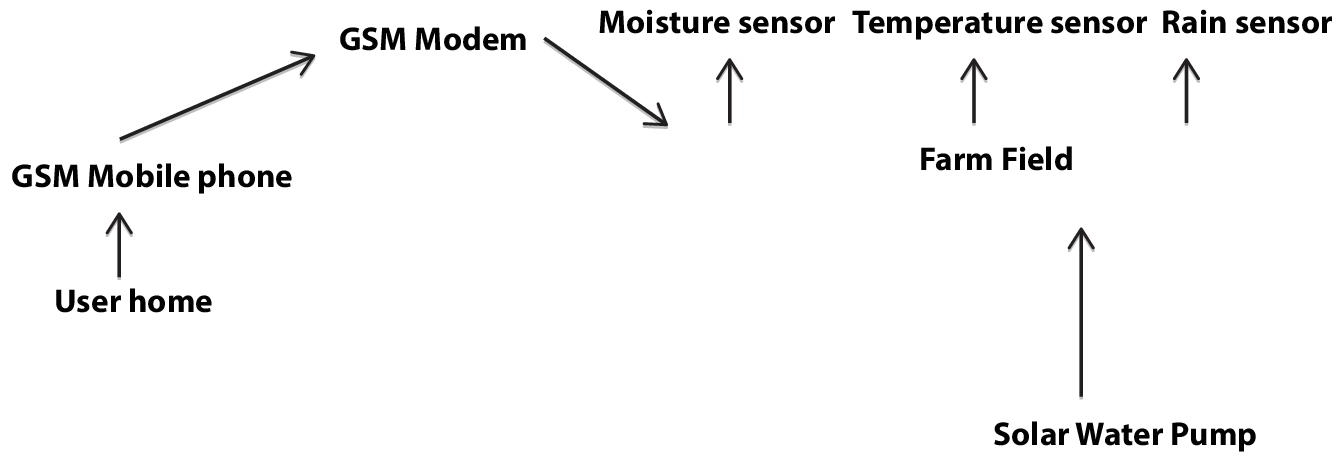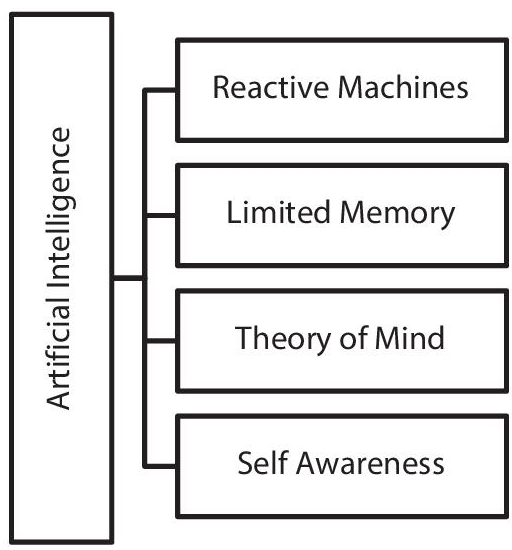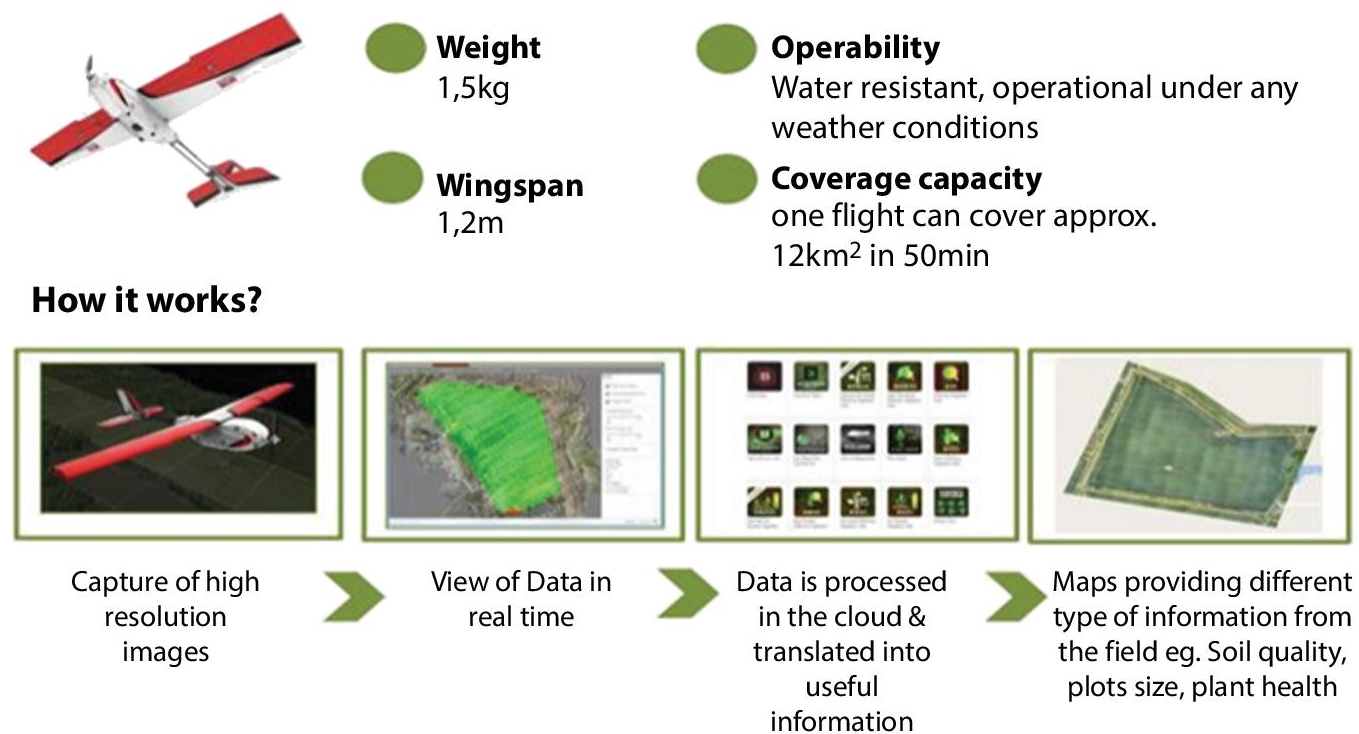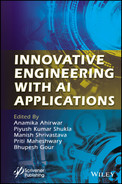5
Artificial Intelligence in Agricultural Engineering
Ashwini A. Waoo1, Jyoti Pandey2 and Akhilesh A. Waoo3*
1Department of Biotechnology, AKS University, Satna, MP, India
2Department of Agriculture, AKS University, Satna, MP, India
3Department of CS/IT, AKS University, Satna, MP, India
Abstract
Agriculture plays a significant role in the sector of the economy. Computerization in agriculture is the most important concern and an emerging subject across the world. The population is growing exponentially and with this increase, the demand for food and employment is also increasing. The conventional methods which were utilized by the farmers were not enough to complete these requirements. Thus, computerized automated methods were introduced. These new methods assure the food requirements and also provided many employment opportunities to billions of people.
Artificial Intelligence (AI) involves computer science in agriculture and resulted in an agricultural revolution. This type of technology has played a major role in the security of crop yield from various factors like climate changes, growth of population, issues in employment, and the security of food. The main concern of this chapter is to compile the various applications of Artificial intelligence in agriculture as irrigation, weeding, spraying with sensors, and other means embedded in robots and drones. These technologies are very valuable for the conservation of water as well as to reduce the excessive use of pesticides, herbicides, in maintaining soil fertility, it also helps in the efficient use of manpower and promote productivity and also improve quality.
Keywords: Artificial intelligence, climate change, impact of AI in agriculture, applications of AI
5.1 Introduction
Artificial intelligence is changing various things in our life; including the mode in which our food is produced. Technologies like machine learning, image identification, and analytical modeling are being ready to apply in industries related to agriculture and to boost productivity and effectiveness. These approaches could be significant steps in the effort to produce more food for an increasing global population by serving farmers, decreasing chemical inputs, identifying diseases in advance, solving the problem of labor shortages, and managing all weather conditions with climate change. Artificial agriculture has two types of direction (Figure 5.1) given below-
- Systems that think like humans
- The Cognitive modeling
- Replicates human thought processes
- Make the same decisions as humans
- Uses purely logical reasoning
- Systems that act like humans
- The natural language processing for communication with human
- Knowledge representation to store information effectively and efficiently
- The automated reasoning to retrieve and answer questions using the stored information
- Machine learning to adapt to new circumstances
- The computer vision to perceive objects
- The robotics to move objects

Figure 5.1 Approaches to artificial intelligence.
The world’s population is understood to be nearly 10 billion by 2050, boosting agricultural order in a condition of humble financial progress by somewhere in the range of 50 percent contrasted with 2013 [1]. At present, ~37.7% of the total land surface is useful for crop production. From employment creation to involvement in National Income, agriculture is very important. It is contributing an extensive part to the economic success of the developed nations and is playing a vigorous part in the economy of the developing countries as well. The growth of agriculture has resulted in a significant enhancement in the per-capita earnings of the rural community [2].
Development in the field of the agricultural area will progress the rural development, further leading in the direction of rural transformation and finally resulting in the transformation based on structure [3, 4]. Among the foundation of new technology, there has been observed an impressive transformation in various industries across the world [5]. Unexpectedly, agriculture, although being the most digitized, has seen energy for the progress and commercialization of agricultural technologies.
Artificial Intelligence (AI) has begun to play a most important role in daily life, extending our perceptions and capability to modify the environment around us [6−8]. Plessen, (2019) gave a perfect method for harvest with planning based on the pairing of crop assignment with vehicle direction-finding is presented [9].
Artificial Intelligence makes computers able to think. Automated computerization of activities and connections with human thinking, like decision-making, learning, etc. The art of creating machines that perform functions that necessitate intelligence when performed by people.
Artificial Intelligence has four major components as shown in Figure 5.2:
- Data: Artificial intelligence involves Data, it is defined as symbols that represent properties of objects, events, and their environment.
- Information: Data gives information, it is a message that contains related meaning, implication, or input for a decision and/or action.
- Knowledge: It is the (1) cognition or recognition (know-what), (2) capacity to act, and (3) understanding (know-why) that resides or is contained within the mind or in the brain.
- Intelligence: It requires the ability to sense the environment, make decisions, and control the action.

Figure 5.2 Components of artificial intelligence.
5.2 Artificial Intelligence in Agriculture
In the agricultural field, AI is an advanced technology for the progress of farmers. Artificial intelligence based on pieces of equipment and many machines has taken the agriculture system to a different level. This technology has very important for better crop production and enhanced real-time monitoring, observation, harvesting, processing, and marketing. The newest technologies of computerized systems by using agricultural robots and drones have made an unbelievable contribution in all agro-based areas. Different hi-technical computer-based automated systems are designed to confirmation of different important parameters like the detection of weeds, detection of yield and crop quality, and other different techniques [10].
Nowadays agriculture growing up with advanced techniques for smart work which means traditional farming to Modern farming as shown in Figure 5.3. In contrast to traditional farming, Modern farming is based on Automated machines, given by Artificial intelligence.
The low output-to-input ratio points to the enormous systemic flaws in India’s agronomy that bring severe hardship to farmers and agricultural laborers, who bear the impact of rising input costs, falling productivity, climate change, poor market access, technological stagnation, and so on. Although the agricultural predicament in India is required to be addressed at various levels, this article discusses the role of technology – in particular, artificial intelligence (AI) in rising agricultural output, and therefore, farmer incomes in India. Artificial Intelligence can develop agricultural productivity by recognizing diseases in different plants and doing pest management. with around 98% accuracy. Also, AI gives growers a weapon against cereal-hungry bugs. Sensors monitor the fruit’s growth in the direction of perfect ripeness, the light adjusting to speed up or slow the rapidity of maturation, this kind of farming requires substantial processing power.

Figure 5.3 Agricultural technologies.
It is used in several industries in the world today; finance, transport, healthcare and now agriculture, farmers can monitor the well-being of their crops or the progress of animals without any demand of going to the farm, and agriculture is undergoing a fundamental transformation. Now a day, development in artificial intelligence technology is less labor-intensive and more efficient.
The powered solution will improve the quality and make the sure faster market for crops. Agriculture plays a major role in both, industries and the organization of the economy. But the change in climate, population growth, and security of food are the concerns that have propelled the industry into looking for innovative approaches for improvement of crop yield. Thus, artificial intelligence is increasingly emerging as part of the industry’s evolution of technology.
Artificial intelligence provides many sources for data collection such as temperature, precipitation, wind, speed, and radiation of solar, with comparisons to historical values on the agricultural earth Though artificial intelligence won’t eliminate the job of farmers (Figure 5.4), it will observe the progress and which provide them more efficient to produce, harvest and sell off essential crops
Fundamentally, Artificial intelligence in the agriculture field is segmented into robotics, crop management, and husbandry of the animal. It is planned to build farming easier, more accurately, more valuable, and more productive use for the growth of farmers. It is predicted that AI and associated farm services can impact 70 million Indian farmers by 2020, thus adding US$ 9 billion to farmer incomes. In 2017, the global AI in the agriculture market size was US$ 240 million, and is possible to reach US$ 1.1 billion by 2025 [11]. Furthermore, issues for example population growth, climate change, and security of food demand innovative ways to improve crop yield and agriculture business by livestock’s using traditional farming to modern farming techniques.

Figure 5.4 Soil/moisture/temperature analysis in smart agriculture.
It’s referring to the model of human intelligence technology i.e., programmed to assume like humans and copy their actions. The term may apply to any instrument that exhibits traits connected with the mind of humans for knowledge and problem-solving. Artificial intelligence can take measures that have the best possibility of achieving a specific goal.
Artificial intelligence is based on the human intelligence principle. It can be defined that, a machine that can without any problems mimic it and complete tasks, from the very simple to those that are still more complex. The goals of artificial intelligence consist of learning, reasoning, and perception.
5.2.1 AI Startups in Agriculture
AI was founded in 2014. This Israeli introduction has revolutionized agriculture farming. AI has developed a solution based on cloud-based obtainable data like soil/water sensors, images of aerial, etc. for farmers. This data is then combined with in-field devices that make sense of it all. These devices are used in greenhouses or fields. It is powered by types of sensors and many technologies like computer vision. The input from these sensors is used to find a correlation between different data labels and build predictions.
Blue River Technology, is founded in 2011. This is based on a California startup that combines artificial intelligence, the vision of the computer, and robotics to make next-generation agriculture tools that reduce chemicals’ effect and saves costs. Computer vision is used for the identification of the individual plant, and how to treat these individual plants and robotics enables the smart machinery to get action.
Farm Bot, it founded in 2011. This company has to take accurate farming to a different level by enabling environmental awareness with precision farming technology. The product, Farm Bot comes at a price and helps the owner to do end-to-end farming methods. Range of seed plantation, the detection of weed, testing of soil, and plants watering, all work done by physical Bot used with an open-source software system.
5.2.2 Challenges in AI Adoption
Although Artificial Intelligence offers opportunities for applications in the agriculture field, there is a lack of awareness of hi-tech machine learning solutions on farms across most parts of the world. The revelation of farming to outer factors like the condition weather, the condition of the soil, and the presence of pests is quite a lot. AI systems also require a lot of data from machines to make accurate predictions. In the case of agricultural land, although data can be gathered easily, temporary data is hard to get. For example, crop-specific data can be obtained only once in one year when the crops are growing continuously. This is only one reason. AI offers a lot of uses in agronomic products like seeds, fertilizer, and pesticides in-field accurate solutions.
5.2.3 Stunning Discoveries of AI
Agriculture is in the central zone of the world’s economy. Thousands of years have passed since people first started to work in the land, and now it is a multimillion-dollar industry. At the same time, current global trends have a direct influence on the branch. The protection of the environment, growing population, and healthy food quality need many tools than different fertilizers and combined harvesters are recent issues in the world. The following are some key discoveries of AI in the agricultural field.
5.2.3.1 Precision Technology to Sow Seeds
In the present time, when farmers struggle to feed as many people as possible, they can’t permit sowing seeds by the random method in the ground. A single seed is responsible for yielding a lot if planted in the exact place. Everybody can avoid both methods overlapping and skipping a lot of space when planting or protecting crops.
The modern software system can also spread the seed within the place wherever it grows the best form, predict weather conditions, and connect with large data. Thus, human information is mixed with the machine mind to grow plants most effectively.
5.2.3.2 Robots for Harvesting
Harvesting is the foremost harassing and monotonous job. Employees get tired and less productive. Robots, on the opposite hand, without exhaustion can work for the maximum time. Manufacturers build new machines according to the product type. For instance, Harvest crop was determined to focus on strawberries and to apply machine vision in agriculture. Nowadays you cannot pick only strawberries but also remove their leaves and inspect fruits with different robotic components. It requires highly specific activities, and it works like the behavior of humans.
5.2.3.3 Field Inspection Using Drones
Imagine that you just will get a vehicle in the air, and it’ll send you a report on everything you wish to grasp about field inspection. This is not just a fantasy- you have the opportunity to use agricultural drone technology right away in smart agriculture (Figure 5.5).
Most significantly, drones will analyze the plant’s condition and also the level of harm caused by pests and weeds. Having a drone report in hand, farmers understand what steps to be taken next.
5.2.3.4 “See and Spray” Model for Pest and Weed Control
Should farmers pay their days and nights during a constant battle with pests and weeds? The supernatural dance orchestra of AI and laptop vision creates the “See and Spray” (Figure 5.6) model.
Smart sees and spray machines direct their efforts to a particular plant. Machines will distinguish the variation between “good” plants and “bad” weeds. At the instant, this technology is employed specifically for cotton fields, however, it is a nice potential for the entire trade.

Figure 5.5 Inspection using drones

Figure 5.6 See and spray model.

Figure 5.7 Chatbot.
This is the latest development widely discussed by engineers. The idea is to generate a chatbot specifically for farmers, as shown by the schematic representation in Figure 5.7. Just like Alexa helps any of using us to rapidly solve certain tasks, the farmer’s chatbot will be adapted to the requests specific to the industry.
5.3 Scope of Artificial Intelligence in Agriculture
Agriculture rapidly accepting the integration of Artificial Intelligence (AI) and Machine Learning (ML) both in terms of agricultural products and in-field farming techniques. There are four types of artificial intelligence as shown in Figure 5.8.

Figure 5.8 Types of artificial intelligence.
These newer approaches have some advantages such as farmers can produce crops that can resist pests and diseases, improve the nutritional contents of crops, and improve the flavor and texture of crops.
5.3.1 Reactive Machines
These machines are basic types of artificial systems that are purely reactive and have the capability neither to form memories nor to use past experiences to report for current decisions.
5.3.2 Limited Memory
This type of artificial intelligence contains machines that can look into the past. This type of work is already done by self-driving cars. For example, they observe other cars’ speeds and paths. That can’t be done in just one minute but rather requires identifying specific objects and monitoring them over time.
5.3.3 Theory of Mind
We may stop here and do calls this point the important divide between the machines we have and the machines we will build in the future. Though, it is better to be more specific to talk about the types of representations of machines that need to form and what they need to be about.
5.3.4 Self-Awareness
This is the final type and the process of Artificial intelligence development which builds systems Ultimately, Artificial intelligence researchers will have to not only understand consciousness but build machines that have it. These machines will be smarter than the human mind but self-awareness does not exist in reality still and it is a hypothetical concept in the case of artificial intelligence.
5.4 Applications of Artificial Intelligence in Agriculture
The applications of AI in agriculture fall into three major categories: Agricultural Robots, Predictive Analytics, and Crop and Soil Monitoring. Computer images and deep learning algorithms are used for the progression of data captured by drones or software-based technology to observe crops and health of the soil, Machine learning models are used to track and predict various environmental impacts on crop yield such as weather/ climate changes.
5.4.1 Agricultural Robots
It is used to handle important tasks of agriculture like harvesting crops at a higher volume and faster pace than laborers of human, robots are designed to support in picking and Packing of crops while struggle other challenges within the agricultural force labor, Agricultural robots can save from harm crops from harmful weeds that may be resistant to herbicides that are meant to eliminate them.
Automation like robotics can help farmers for getting more resourceful ways to the protection of crops from different weeds, a robot also called See and Spray leverages a computer for visualization to monitor and precision/ accurately spray weeds on the plants of cotton, and precision spraying can help to prevent resistance by herbicides.
The robot is capable to harvest approximate 8 acres in a single day and replaced by 30 human laborers, an expected 40 percent of annual costs of the farm is funneled into “income, salaries, and contract for expenses in labor” for crops such as fruits and vegetables where needs of labor are likely to be the highest.
5.4.2 Soil Analysis and Monitoring
Companies are leveraging computers used for visualization and deep-learning of algorithms to process the capture of data by drones or software-based technology to monitor crop and soil health.
5.4.3 Predictive Analysis
Machine learning models are being developed to track and calculate various impacts of the environment on the yield of crops such as weather/ climate changes. The following aspects are taken into Consideration for Predictive Analysis.
- Weather and Climatic Conditions Forecasting
- Disaster Prediction
- Crop Analysis
- Rainfall Analysis
- Disease Cycling
5.4.4 Agricultural Industry
Artificial Intelligence is used in many different types of agricultural industries, from manufacturing to automotive. Agriculture is a major source of involvement in the industry and a large part of the establishment of our economy. In changing climates and population growth, AI resulted in a smart innovative technology that is useful for the protection and improvement of crop yield. Agriculture plays a major role in the industry and the foundation of the economy. Factors like climate change, growth of population, and security of food concerns have propelled the industry into looking for more inventive approaches to improving crop yield. AI is progressively emerging as part of the industries for technological evolution.
5.4.5 Blue River Technology – Weed Control
The Blue River Technology can control weeds it is a top priority for farmers and current challenges as resistance to herbicides become more commonplace. Today, an expected 250 species of weeds have become herbicide-resistant.
Companies are using robotics to help farmers find more effective ways to the protection of their crops from different weeds.
5.4.6 Crop Harvesting
Nowadays Automation is also emerging to help with the challenges of the labor force. The industry is predicted to experience a six percent decline in agricultural workers from 2014.
Harvest CROO Robotics has developed a robot to assist strawberry farmers to pick/selecting and pack their crops. The shortage of laborers has led to millions of dollars of revenue losses in key farming regions like California and Arizona.
5.4.7 Plantix App
Plantix app identifies possible defects and deficiencies of nutrients in the soil, the app uses to detect and identify images of plant diseases, the image recognition app can recognize possible defects through images captured by the user’s smartphone camera, and the farmers can contribute to the online community to network with other farmers to discuss plant health issues and contact their local weather reports [12].
Plantix can diagnose diseases of plants, damages of pests, and deficiencies of nutrients affecting the crops and provides related treatment measures. This type of analysis is conducted by software algorithms that correlated with particular foliage patterns and with certain defects of soil, pests of plants, and diseases of plants.
5.4.8 Drones
Drones can be used in a variety of agronomic activities such as Spaying, plant counting parameters (plant size, plot statistics, compromised plots, planter skips), plant height and density, vegetation indices: leaf area, anomaly detection treatment efficacy, infestations, water needs: damage/drown out, etc.
5.4.9 Driverless Tractors
A driverless tractor is a self-governing farm vehicle that delivers a high attractive effort with slow speeds, for the tillage purpose and other tasks of agriculture it can operate automatically without the presence of any human inside the tractor, Self-driving tractors have the latent to optimize the on-farm process and recommend a safer also provide a less demanding working environment for the workers of farm and their families.
Driverless tractors are programmed to examine and observe their location, and decide the speed and obstacles to avoid animals, human beings, or objects in the field performing their task; they operate by using the aid of a supervisor monitoring the development at a control station [13, 14].
5.4.10 Precise Farming
Precision farming uses Artificial intelligence to produce correct and restricted techniques that help suggest guidance and considerate about water and management of nutrients, optimal harvesting and times of planting as well as when the right times for the rotation of crop would be, these processes make farming more capable and can help calculate ROI on specific crops based on their costs and margins inside the market.
5.4.11 Return on Investment (RoI)
By including the data, for example, conditions of climate, types of soil, commercial centers, potential invasions, and information in the algorithm, AI can decide on the best seeds to exploit and support to farmers maximize production. This can get better the RoI (Return on Investment) for all farms; AI improvement can process investigations that help farmers minimize losses in the production supply chain of their farms.
5.5 Advantages of AI in Agriculture
Agriculture is smart digital, Artificial intelligence in agriculture is emerging in three categories, agricultural robotics, soil and crop monitoring and predictive analytics, farmers are using a sensor and soil sampling for the collection of data, and this data is stored in on-farm management systems that allow for improved processing and their analysis [15, 16].
Machine learning provides customers with a sense of their soil’s strengths and weaknesses the importance is on preventing defective crops and optimizing the potential for the production of healthy crops, the growth in AI technology has strengthened agro-based businesses to run more powerfully. AI systems can solve some of the most challenges, by continuous monitoring parameters (shown in Figure 5.9) such as:
- Land use land cover mapping.
- Crop health monitoring.
- Crop inventory.

Figure 5.9 Field monitoring.
- Soil resource inventory.
- Water supply management.
- In seasonal agricultural operation.
5.6 Disadvantages of AI in Agriculture
Artificial intelligence improves agriculture manufacturing in many amazing ways; there are many concerns as regards the forthcoming of AI on employment and the labor force of the sectors of agriculture. Droning field tasks can be easily automated this can regularly make certain roles outmoded. Humans will be replaced by smart robots that can safely navigate space, find and move agricultural products as well as make simple and complex field operations.
The cost of technology such as drones has made it engaged outside of the government and research bodies, it is expensive to buy the drones, and the biggest challenge will be funding inside from the government efforts and research institutions.
5.7 Conclusion
Artificial Intelligence (AI) helps improve agricultural productivity. AI has been applied in several aspects of agricultural practices some examples of AI are obtainable. In this article, we investigate applications of artificial intelligence to offer business leaders an understanding of trends and present representative examples of admired applications. AI/ML techniques help farmers analyze land/soil/health of crops, etc. AI helps farmers to save time and allows farmers to grow the right crop′ in each season that has the best yield. Vertical cropping can reduce water usage, and make efficient land′ usage can be cultivated in urban areas in buildings. It also reduces the problems associated with labor unavailability. Prediction of next year’s crop seasons/weather/climate/rainfall can also be possible. AI technology suggests the appropriate pesticides/crops/places for agriculture according to the current need of India.
References
- 1. FAO, The State of Food and Agriculture 2017: Leveraging Food Systems for Inclusive Rural Transformation, pp. 1–181, Food and Agriculture Organization of the United Nations, Rome, 2017.
- 2. Talaviya, T., Shah, D., Patel, N., Yagnik, H., Shah, M., Implementation of artificial intelligence in agriculture for optimization of irrigation and application of pesticides and herbicides. Artif. Intell. Agric., 4(1), 58–73, 2020. https://doi.org/10.1016/j.aiia.2020.04.002.
- 3. Mogili, U.M.R. and Deepak, B.B.V.L., Review on application of drone systems in precision agriculture. International Conference on Robotics and Smart Manufacturing. Procedia Comput. Sci., 133, 502–509, 2018.
- 4. Shah, G., Shah, A., Shah, M., Panacea of challenges in real-world application of big data analytics in healthcare sector. JDIM, volume, 1(2), 107–116, 2019. https://doi.org/10.1007/s42488-019-00010-1.
- 5. Kakkad, V., Patel, M., Shah, M., Biometric authentication and image encryption for image security in cloud framework. Multiscale Multidiscip. Modeling, Experiments Design, vol. 2, no. 4, pp. 233–248, 2019. 10.1007/ s41939-019-00049-y.
- 6. Kundalia, K., Patel, Y., Shah, M., Multi-label movie genre detection from a movie poster using knowledge transfer learning. Augment. Hum. Res., 5, 11, 20202020. https://doi.org/10.1007/s41133-019-0029-y.
- 7. Gandhi, M., Kamdar, J., Shah, M., Preprocessing of non-symmetrical images for edge detection. Augment. Hum. Res., 5, 10, 2020. https://doi.org/10.1007/s41133-019-0030-5.
- 8. Ahir, K., Govani, K., Gajera, R., Shah, M., Application on virtual reality for enhanced education learning, military training, and sports. Augment. Hum. Res., 5, 7, 2020.
- 9. Plessen, M.G., Freeform Path Fitting for the Minimisation of the Number of Transitions between Headland Path and Interior Lanes within Agricultural Fields, pp. 1–7, 2019, Arxiv 1910.12034v1.
- 10. Liakos, K.G., Busato, P., Moshou, D., Pearson, S., Bochtis, D., Machine learning in agriculture: A review. Sensors (Basel), 18, 8, 2674, Aug. 14, 2018.
- 11. Maher, T., A complete overview of artificial intelligence in agriculture market, 2018. https://krishijagran.com/news/a-complete-overview-of-artificial-intelligence-in-agriculture-market.
- 12. Khan, M. Y., and Kumar, S., applications of artificial intelligence in agriculture. International Research Journal of Modernization in Engineering Technology and Science; Volume: 03/Issue: 01: pp. 1398-1402, January, 2021.
- 13. Faggella, D., AI in agriculture–present applications and impact. Emerj, https://emerj.com/ai-sector-overviews/ai-agriculture-present-applications-impact/, 2020.
- 14. Anbarasan, V., and Jayalakshmi, V., Artificial Intelligence in Agriculture and its Application. International Journal of Creative Research Thoughts (IJCRT); Volume 10, Issue 6, June 2022 | ISSN: 2320-2882.
- 15. Irimia, M., Five ways agriculture could benefit from artificial intelligence, AI for the Enterprise, IBM, 2016.
- 16. Pathan, M., Patel, N., Yagnik, H., Shah, M., Artificial cognition for applications in smart agriculture: A comprehensive review. Artif. Intell. Agric., 4, 81–95, 2020.
Note
- *Corresponding author: [email protected]
